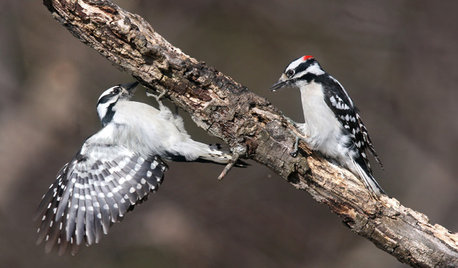S.O.S. I need help identifying the problem with my lawn
genocyber
13 years ago
Related Stories

GARDENING FOR BIRDSBackyard Birds: How to Identify Two Common Woodpeckers
Downy and hairy woodpeckers have similar coloration and behavior. But there are two big differences that separate them
Full Story
STANDARD MEASUREMENTSThe Right Dimensions for Your Porch
Depth, width, proportion and detailing all contribute to the comfort and functionality of this transitional space
Full Story
DECORATING GUIDESCould a Mission Statement Help Your House?
Identify your home’s purpose and style to make everything from choosing paint colors to buying a new home easier
Full Story
EARTH DAYThe Case for Losing the Traditional Lawn
Work less, help the environment and foster connections by just saying no to typical turf
Full Story
ORGANIZINGDo It for the Kids! A Few Routines Help a Home Run More Smoothly
Not a Naturally Organized person? These tips can help you tackle the onslaught of papers, meals, laundry — and even help you find your keys
Full Story
MOST POPULARMeet a Lawn Alternative That Works Wonders
Carex can replace turfgrass in any spot, is low maintenance and adjusts easily. Add its good looks and you’ve got a ground cover winner
Full Story
PETS6 Ways to Help Your Dog and Landscape Play Nicely Together
Keep your prized plantings intact and your dog happy too, with this wisdom from an expert gardener and dog guardian
Full Story
MOST POPULAR9 Real Ways You Can Help After a House Fire
Suggestions from someone who lost her home to fire — and experienced the staggering generosity of community
Full Story
DECLUTTERINGDownsizing Help: How to Edit Your Belongings
Learn what to take and what to toss if you're moving to a smaller home
Full Story




dchall_san_antonio
texas_tifway
Related Professionals
Wrentham Landscape Architects & Landscape Designers · Belmont Landscape Architects & Landscape Designers · Manhattan Beach Landscape Architects & Landscape Designers · Parole Landscape Architects & Landscape Designers · Walnut Landscape Architects & Landscape Designers · Williamsburg Landscape Contractors · Fort Worth Landscape Contractors · Fruit Heights Landscape Contractors · Galveston Landscape Contractors · Goodlettsville Landscape Contractors · Pahrump Landscape Contractors · Riverhead Landscape Contractors · Palos Hills Landscape Contractors · Winter Gardens Landscape Contractors · Folsom Swimming Pool BuildersBilll
dchall_san_antonio